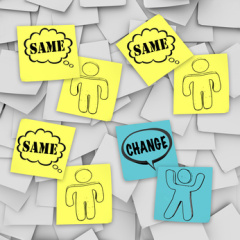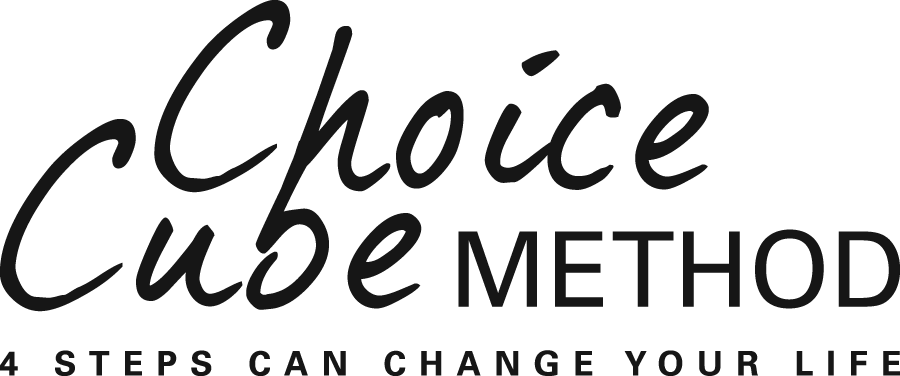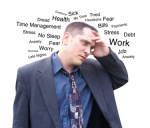When Jack feels upset, he tries to figure out what’s going on. Sometimes, he can, but more often he can’t find the answer. Janice in contrast, doesn’t even try to understand what’s happening. She just looks for someone to criticize or blame.
the answer. Janice in contrast, doesn’t even try to understand what’s happening. She just looks for someone to criticize or blame.
Tom simply is not interested in trying to understand. He thinks that if he just forges ahead and works harder and harder, things have to get better. But usually they don’t.
These are all examples of people caught up in efforts to control people, things, actions, and problems.
At the other extreme, are the people who try to avoid difficulties. Fran, for example, escapes her problems by getting high. Jack stuffs his thoughts and feelings about the problem, while Alice collapses, submits to the problem, and wallows in it.
We have failed to understand and manage the overwhelming power of our body and emotions to hijack our mind and negatively influence our everyday life.
Instead, for years, our efforts to help people with problems have focused on changing how they think—on their minds. We have ignored the role the body plays in driving us to avoid or control things that make us uncomfortable or threaten us in some other way.
Why would we prefer to focus on the mind? Because honestly confronting our stress and emotions can be uncomfortable, even painful. In fact, we often choose to feel stuck and unable to change rather than deal directly and honestly with stress and negative emotions.
This is dangerous. When we refuse to consciously and appropriately[1] manage stress and our emotions two things happen. First, stress and our emotions lock in warped and distorted thinking. Second, they hide the whole truth—the big picture--from us.
We then tend to use the avoid/control survival strategies, mentioned above, to keep stress and negative emotions from overwhelming us. The problem is that each time we repeat an old strategy, we strengthen it and create habit patterns of negative beliefs, reactions, and dysfunctional behaviors.
Like Jack, Janice, and Alice, we reach for old, familiar strategies that prevent healthy resolution of issues. We strengthen the stress and negative emotions attached to them and create habit patterns that we mindlessly repeat and reinforce through repetition.
It’s time to awaken to the role the body plays in what we think, feel, want, and do. It’s time to learn how to manage our stress and emotions moment-to-moment, instead of allowing stress and negative emotions to take over and control us.
A first step is stress management training. This approach makes us aware of our body and often enables us to stay present in the moment. Body awareness and knowing how to use our mind to stay present is foundational. But there’s more, much more.
Can you imagine a dependable method for choice and change that provides a simple framework to help you immediately recognize and label stress and negative emotions; tools that equip you to make wise choices and changes; and 4 steps to guide that change?
Such a method would create an internal sense of safety as follows. I can trust the framework to help me recognize my stress and negative emotions, I can use the tools to help me take responsibility and make wise choices and changes. I can follow these 4 steps and do something different that leads to positive action.
The framework, tools, and 4 steps are like a tool kit that keeps you moving through problems and difficulties to a win-win resolution of them.
When you can recognize your reactions and take responsibility for them, hopefully you have some simple tools to help you manage them. The tools should help you let go of crazy, hurtful thoughts--distorted information—and the emotions attached to those thoughts.
Both the thoughts and the emotions--energy in motion--are embedded in the nervous system of your mind and body. It’s this distorted information and energy and that create the stress and negative emotions in the first place.
I would like to offer you the Choice-Cube® Method framework, tools and 4 steps to help you move through confusion, anxiety, anger, shame, and feeling overwhelmed to honesty and compassion for others and yourself.
Would you like to learn how to use the framework, tools, and 4 steps in your life? They are found in, Become the Person You Were Meant to Be - The Choice-Cube Method: Step by Step to Choice and Change, by Dr. Beth Blevins Cujé. You can learn more about the method and sign up for a free copy of the first chapter of Dr. Cujé’s book. Just click here: http://www.choicecube.com.
[1] “Appropriately” means managing our stress and emotions without hurting ourselves or others.






